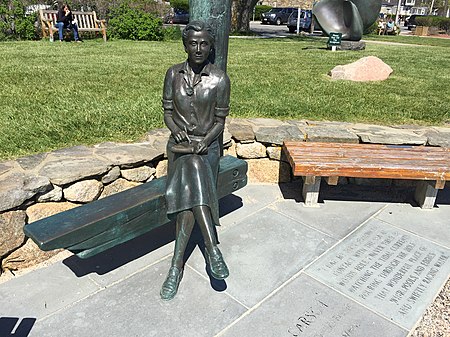Statue of Rachel Carson
2013 establishments in Massachusetts2013 sculpturesBronze sculptures in MassachusettsFalmouth, MassachusettsMonuments and memorials in Massachusetts ... and 4 more
Outdoor sculptures in MassachusettsRachel CarsonSculptures of women in MassachusettsStatues in Massachusetts

An outdoor sculpture depicting the biologist, conservationist, and author of the same name by David Lewis was installed in Waterfront Park in Woods Hole, Massachusetts, United States, on July 14, 2013.
Excerpt from the Wikipedia article Statue of Rachel Carson (License: CC BY-SA 3.0, Authors, Images).Statue of Rachel Carson
Water Street,
Geographical coordinates (GPS) Address Nearby Places Show on map
Geographical coordinates (GPS)
| Latitude | Longitude |
|---|---|
| N 41.52495 ° | E -70.67254 ° |
Address
Water Street
02543
Massachusetts, United States
Open on Google Maps








